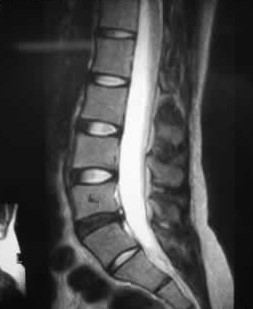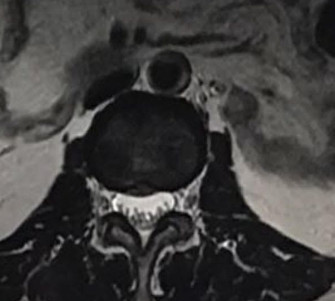Maintenance of intervertebral discs, Water and collagen are essential
Degenerative disc disease refers to changes in the intervertebral disc that cause pain in the neck or lower back. The function of the intervertebral disc between the spine is to act as shock absorber and maintain the flexibility of the spine. Because of these effects, we can bend and twist the body. But with age, the intervertebral discs will wear, tear and degenerate.
The intervertebral disc is composed of water and collagen
The intervertebral disc is formed by a soft inner water core and a strong outer fibrous ring. Intervertebral discs are mostly composed of water and collagen. As we age, the intervertebral discs will gradually become thinner due to loss of water and collagen. In addition, the space between the vertebrae becomes less and the nerves are compressed and to cause pain.
In addition, the stress and pressure caused by repeated wear and tear or trauma over the years can also cause fibrous annulus tears. The nucleus of the intervertebral disc may protrude through the cracks, pressing the surrounding spinal nerves and causing symptoms such as neck pain, sciatica, and hands and feet numbness.
In severe cases, the leg muscles may become weak
Patients may feel continuous pain in the low back, neck and upper back. The lower back, buttocks or thighs pain often last for a few days to several months, especially when they feel worse when sitting. Some patients feel numbness and tingling in the legs when walking. The leg muscles may also become weaker.
Clinical diagnosis and treatment
The doctor will look for the cause of the disease by understanding the medical history, checking the muscles and nerve reflexes, and other physical exams. Patient may also be asked to perform a magnetic resonance scan (MRI) to review the herniated disc which involves compression of the surrounding spinal nerves. It can also be seen from the MRI scan that the intervertebral disc loses water and collagen and turns black. This is the change of degenerative intervertebral disc.


From the MRI scan, it can be seen that the intervertebral disc will become black due to loss of water and collagen. This is the change of degenerative intervertebral disc.
Chiropractors will use conservative treatment methods to relieve pain, inflammation, muscle aches and neuralgia. Most of the will improve through conservative treatment, and only a few patients need further surgery.
Maintaining the correct posture is the first step to prevent herinated disc
Exercise must be appropriate
Stretching the spine can keep the intervertebral disc strong, but heavy-duty exercises should be avoided, because this will increase the pressure on the outer annulus and easily cause the annulus to tear.
Maintain correct posture
Various incorrect postures in life will increase the pressure on the intervertebral disc.
Be especially careful when moving heavy objects
When lifting heavy objects, you must pay attention to the correct posture. If you need to repeatedly lift the weight, consider wearing a belt to protect your waist.
Replenish water and collagen
The intervertebral disc is composed of water and collagen. The intervertebral disc and the surrounding soft tissues contain a lot of water to maintain the elasticity of the intervertebral disc. Therefore, water and collagen must be supplemented appropriately. (Collagen: www.drdisc.hk)

Patients may experience continuous pain in the upper back, neck and the lower back, buttocks, or thighs often last for several days to months.

Incorrect posture will increase the risk having herinated disc and lower back pain

 Book an Appointment
Book an Appointment


